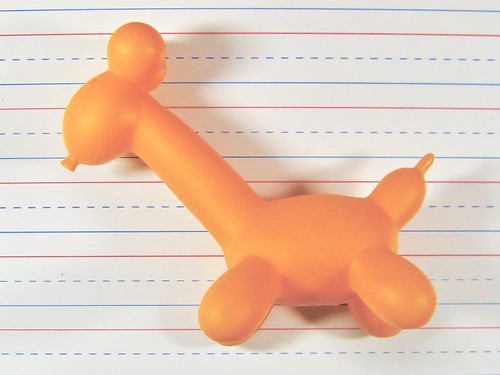How parietal and premotor areas from the motor resonance network, thatcorrespond
How parietal and premotor regions on the motor resonance network, thatcorrespond physiologically towards the human BMS-687453 supplier mirror method, respond to robotic actions and, in turn, what the functions of visual stimuli are that have an effect on their response. Interestingly, an fMRI experiment in awake macaque monkeys demonstrated a somehow reduced, but nonetheless massive, response of an anterior premotor location buried within the arcuate sulcus, and supposedly homologous towards the anterior a part of Broca’s region in humans, to a robotic hand performing a grasping movement compared having a human hand [40]. This clearly shows that the quest for mirror method responses to humanoid robots in human inferior frontal and parietal cortices is warranted. Historically, the initial neuroimaging experiment making use of positron emission tomography (PET) reported enhanced response for the human, compared together with the robot, within the left premotor cortex and concluded that `the human premotor cortex is “mirror” only for biological actions’ [4]. This has been contradicted by subsequent fMRI studies, and  is probably to possess its explanations either within the approach made use of, PET lowering the amount of conditions and contrasts that may be run, or inside the robotic device made use of. Subsequent fMRI experiments utilizing a related stimulus (robotic hand grasping an object) found parietal and premotor response to each human and robotic stimuli [42], and an increase within the response of dorsal and ventral premotor at the same time as PubMed ID:https://www.ncbi.nlm.nih.gov/pubmed/25661903 parietal cortices within the left hemisphere. Similarly, a Lego robot dancing was connected with elevated response in inferior parietal lobules bilaterally [43]. By contrast, an electrophysiological marker of motor resonance, the mu rhythm suppression, was shown to become lowered when observing a robot’s versus a human’s action [44]. Interestingly in the two fMRI research, participants were explicitly required to pay interest towards the action becoming depicted, but only implicitly in the EEG experiment, in which they were to count the number of instances the movie depicting the action stopped. A further result certainly suggests that motor resonance in inferior frontal cortices is sensitive to process demands [45]: response in bilateral Brodmann area 45 was considerably much more enhanced when judging the intention behind the observed action (in that case, an emotion) relative to a additional superficial function with the action (the quantity of movement) for robot compared with human actions. This was interpreted as an enhanced reliance on resonance when explicitly processing the robot’s movements as an intentional action compared with mere artefact displacements (see ). Altogether, this line of analysis suggests that motor resonance responds to humanlike artificial agents, albeit this effect becoming reduced compared with actual humans in some instances [24,45]. In other circumstances [38,39] the motorperceptual resonance impact was in the very same level for a humanoid robot as for any human. Therefore, whether the motorperceptual resonance impact is lowered when observing a robot as compared to observing a human could possibly rely on the type of robot, its kinematic profile [46] or the type of process getting performed. fMRI final results not just confirmed a reduction of activity in an location related with motor resonance, but additionally demonstrated that this reduction may very well be reversed by explicitly instructing the participant to method robot stimuli as `actions’, thus demonstrating a complicated interplay amongst processing of sensory information and internal state of thoughts in motor resonance to.
is probably to possess its explanations either within the approach made use of, PET lowering the amount of conditions and contrasts that may be run, or inside the robotic device made use of. Subsequent fMRI experiments utilizing a related stimulus (robotic hand grasping an object) found parietal and premotor response to each human and robotic stimuli [42], and an increase within the response of dorsal and ventral premotor at the same time as PubMed ID:https://www.ncbi.nlm.nih.gov/pubmed/25661903 parietal cortices within the left hemisphere. Similarly, a Lego robot dancing was connected with elevated response in inferior parietal lobules bilaterally [43]. By contrast, an electrophysiological marker of motor resonance, the mu rhythm suppression, was shown to become lowered when observing a robot’s versus a human’s action [44]. Interestingly in the two fMRI research, participants were explicitly required to pay interest towards the action becoming depicted, but only implicitly in the EEG experiment, in which they were to count the number of instances the movie depicting the action stopped. A further result certainly suggests that motor resonance in inferior frontal cortices is sensitive to process demands [45]: response in bilateral Brodmann area 45 was considerably much more enhanced when judging the intention behind the observed action (in that case, an emotion) relative to a additional superficial function with the action (the quantity of movement) for robot compared with human actions. This was interpreted as an enhanced reliance on resonance when explicitly processing the robot’s movements as an intentional action compared with mere artefact displacements (see ). Altogether, this line of analysis suggests that motor resonance responds to humanlike artificial agents, albeit this effect becoming reduced compared with actual humans in some instances [24,45]. In other circumstances [38,39] the motorperceptual resonance impact was in the very same level for a humanoid robot as for any human. Therefore, whether the motorperceptual resonance impact is lowered when observing a robot as compared to observing a human could possibly rely on the type of robot, its kinematic profile [46] or the type of process getting performed. fMRI final results not just confirmed a reduction of activity in an location related with motor resonance, but additionally demonstrated that this reduction may very well be reversed by explicitly instructing the participant to method robot stimuli as `actions’, thus demonstrating a complicated interplay amongst processing of sensory information and internal state of thoughts in motor resonance to.
